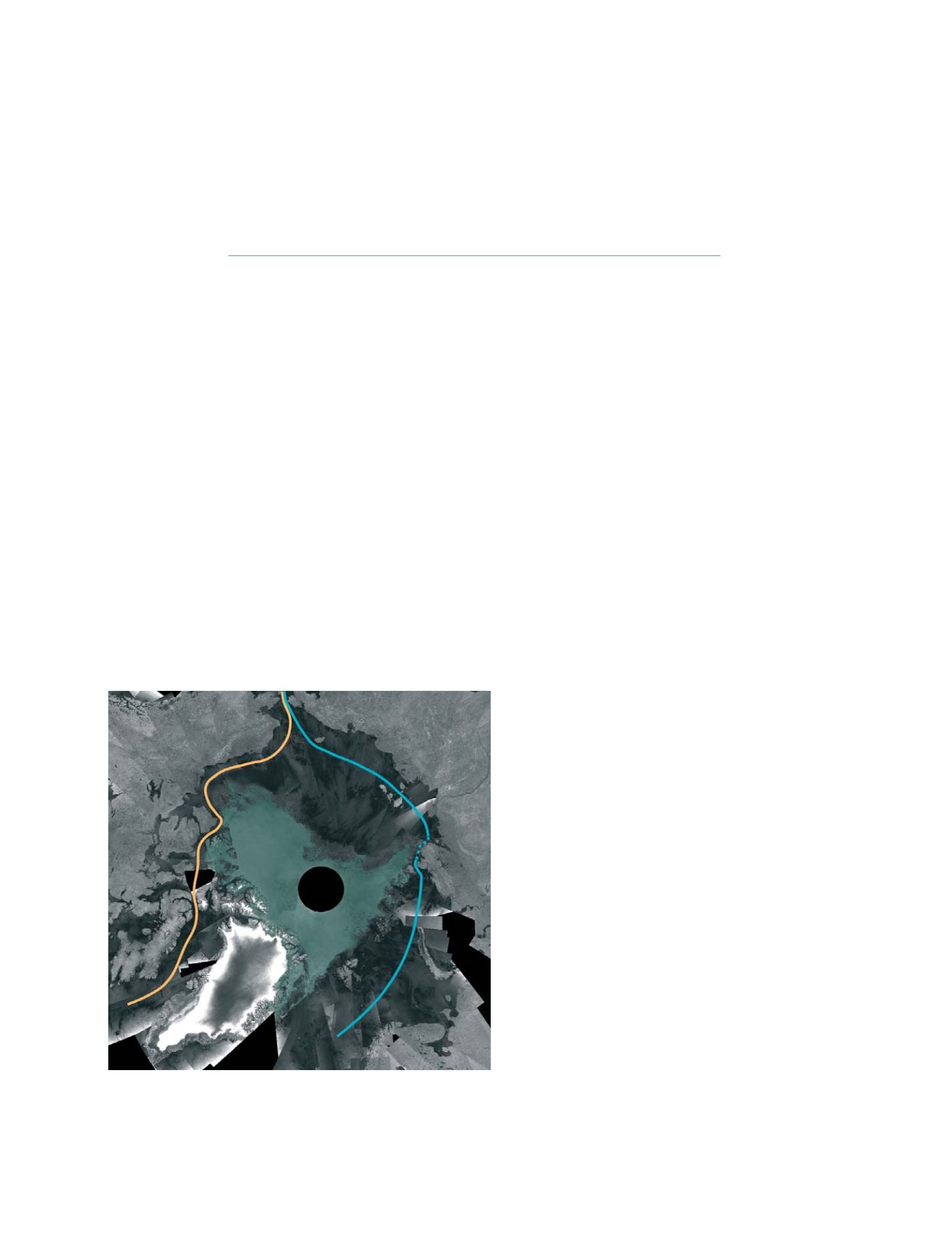

Envisat ASAR mosaic of the Arctic Ocean for early September 2007, clearly
showing the most direct route of the Northwest Passage open (orange line) and
the Northeast passage only partially blocked (blue line). The dark grey colour
represents the ice-free areas, while green represents areas with sea ice
Image: ESA
[
] 34
GMES and GEOSS: towards
a new era in Earth observation
V. Liebig, Director, ESA Earth Observation Programmes
T
he year 2007 marks the fiftieth anniversary of the begin-
ning of the space era. During half a century of space flight,
we learned to live in space, to explore it and to profit from
it. Paradoxically, one of the most striking discoveries proved to
be the starting point: Earth. Understanding the complexity of
Earth remains a paramount challenge. Earth observation satel-
lites are our constant assistants in this quest. Their era began
less than two years after Sputnik, before the first humans were
sent into space, showing an intrinsic interest in looking back on
Earth right from the beginning of the space age.
Space capacities
Today, Earth observation satellites are used for a wealth of scientific
studies and applications. When the United Nations
Intergovernmental Panel on Climate Change (IPCC) published its
Fourth Climate Assessment Report
in spring 2007, focusing inter-
national media attention once more on the climate
change debate, a significant part of the findings
presented was based on satellite data. Their observa-
tions have detected an accelerated level of global
warming and sea level rise; they have shown the
shrinking of the Arctic ice cover and a decrease in snow
extending to both hemispheres; they help us to under-
standing global change processes by monitoring clouds
and aerosols, greenhouse gas concentrations, vegeta-
tion extent, ocean salinity and many other aspects. At
the same time, data from space are used for a wealth
of practical applications, ranging from oil spill, crop
or iceberg monitoring to disaster management.
In spite of the progress made over the past years,
demand has grown faster. We need accurate, long-term
data for periods allowing us to make the correct assump-
tions, build the right models and undertake predictions.
Data continuity is therefore a key challenge for space
agencies and governments.
Likewise, we need to progress in deploying evolu-
tionary sensors and systems, based on previous
experience but also building on new technologies and
focused needs. The Earth Explorer missions of the
European Space Agency (ESA) are an effort to launch
high-end satellites targeted at specific science areas.
A new era for European Earth observation
The new era we are facing is not marked by a major step
forward in technology – it is the conception that space
is a key asset for the
political
Europe. And it is the polit-
ical conception that a key contribution of space lies in
the delivery of applications and services to the European
citizen. The European Space Policy adopted by ministers
at the Space Council on 22 May 2007 emphasizes “the
unique contributions space-based systems can provide
to the overall research effort and to applications respond-
ing to European policies and objectives”.
1
The political
recognition of space assets for the benefit of life on Earth
is a decisive step forward. A concerted policy among the
nations of Europe that envisages concrete goals for space
exploration and utilization is its direct outflow.
Two flagship programmes are being developed as the
first tangibles of the cooperation between the European
Union (represented by the European Commission) and
ESA, responding to the calls of the European Space
N
ATIONAL
& R
EGIONAL
R
EPORTS
















